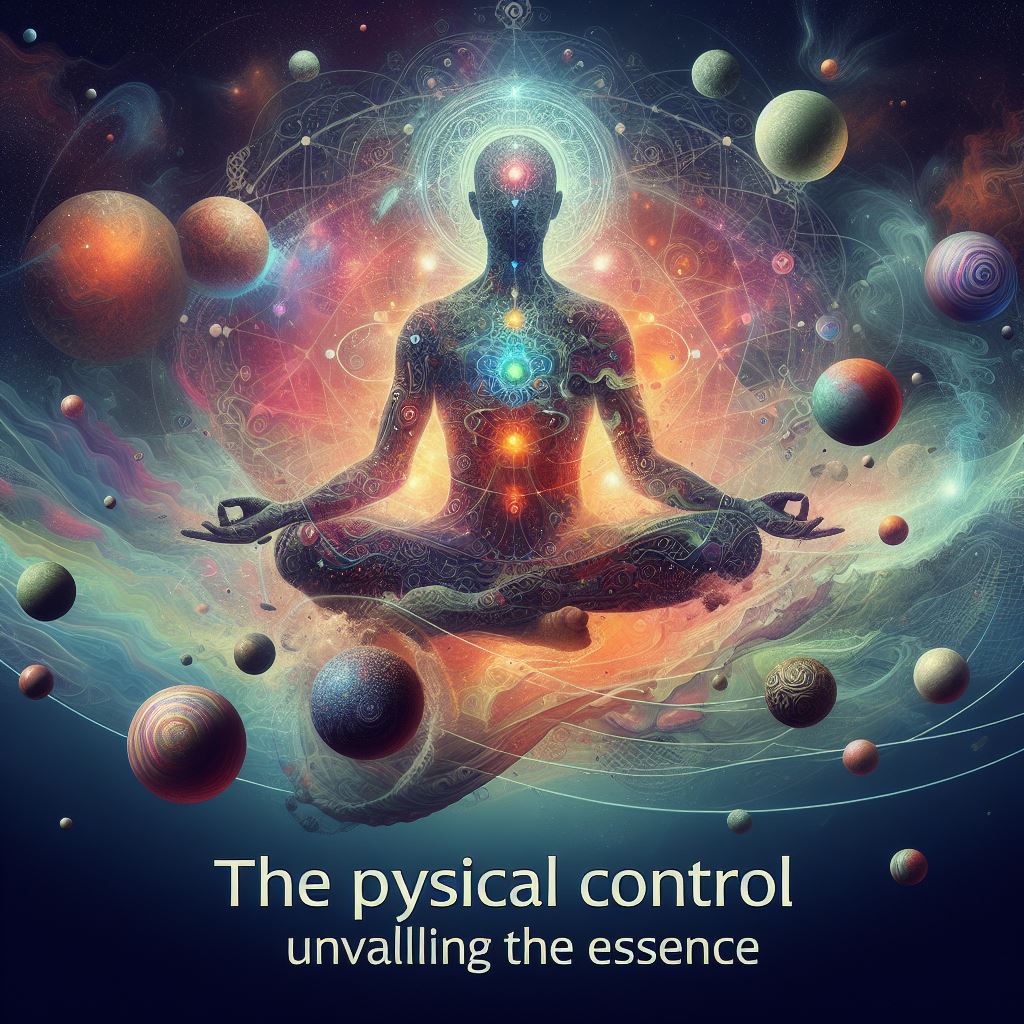Introduction:
Welcome to a journey where the definition of physical control transcends the ordinary. In this exploration, we navigate through the intricacies, unveiling the layers that constitute true mastery. From the psychological aspects to the tangible expressions, this article aims to provide a holistic view of physical control.
The Power of Physical Control
Definition of Physical Control Embark on this elucidation of physical control, where the essence transcends the mere act of restraining movements. It’s a profound journey into the art of harnessing power with finesse. True physical control isn’t a rigid constraint; instead, it’s a dynamic dance between strength and precision, a symphony orchestrated by the mind and gracefully executed by the body.
Imagine physical control as a skillful choreography where every movement is intentional, every gesture purposeful. It goes beyond the external appearance; it delves into the harmony between mental fortitude and bodily prowess. It’s about wielding strength with a surgeon’s precision, creating a seamless fusion of the physical and the cerebral.

In this intricate exploration, physical control unveils itself as a holistic concept. It’s not confined to the limitations of a single action but extends its reach into the realms of self-awareness, mindfulness, and mastery. It’s the conscious navigation of one’s own abilities, a journey that transforms control from a mere action into an art form.
The dance of physical control is not about overpowering; it’s about directing, guiding, and commanding with grace. It’s the finesse in a martial artist’s stance, the precision in a gymnast’s routine, and the confident stride of a leader. It’s the ability to adapt seamlessly to the ever-changing cadence of life, responding to challenges with poise and resilience.
So, as we unravel the layers of physical control, remember that it’s not a static concept but a dynamic force that evolves with practice, understanding, and experience. It’s the embodiment of strength and precision working in tandem, creating a masterpiece where the mind and body move in harmony. This, indeed, is the true definition of physical control—an art, a science, and a journey toward mastery.
The Mind-Body Connection
The Symbiosis of Mind and Body In this exploration, we dive deep into the profound connection that exists between the mind and the body—a symbiosis that forms the foundation of physical control. It’s a journey where the intricate dance of mental processes orchestrates the fluid movements of the body.
Physical control, contrary to mere mechanical actions, is an intricate and strategic choreography initiated by the mind. The mind serves as the architect, sketching the blueprints of deliberate movements, calculated gestures, and purposeful expressions. Imagine the mind as the conductor of a grand orchestra, directing each note and tempo, and the body as the instrument bringing the composition to life.
The symphony of physical control commences in the mind’s theater, where mental fortitude takes center stage. It’s here that one’s determination, focus, and resilience come together to craft a performance that transcends the boundaries of the ordinary. Mental fortitude becomes the guiding force, transforming abstract thoughts into tangible actions.
Explore how the resilience of the mind becomes the backbone of physical control, as every movement is a testament to the inner strength harnessed within. The mind, like a skilled composer, shapes the narrative of control, infusing intention into each motion and imbuing the body with purpose.
Picture a martial artist in a state of unwavering focus, a dancer in perfect synchronization with the music, or an athlete executing flawless moves—these are manifestations of the symbiotic relationship between the mind and body in the pursuit of true control.
In the realm of physical control, mental fortitude becomes the catalyst that propels the body to achieve feats beyond its perceived limits. It’s a translation of thoughts into action, where the mind’s clarity paves the way for the body’s execution. This connection is the heartbeat of physical mastery, where the mind and body coalesce to create a harmonious expression of control.
So, as we navigate this intricate dance between mind and body, remember that true physical control is not just a physical endeavor; it’s a testament to the power of a resilient mind guiding the body through the nuances of controlled motion.

Precision in Movement
Refining the art of Mastering Movement Precision elevates physical control to a sublime level. Whether executing a graceful pirouette on the dance floor or adopting a measured martial arts stance in the dojo, the key lies in cultivating an acute awareness of one’s body and its inherent capabilities.
In the realm of dance, precision is the language through which the body communicates the nuances of expression. Each movement, from the delicate extension of a limb to the subtle shift in weight distribution, becomes a brushstroke on the canvas of performance. The dancer’s journey towards mastery involves a meticulous exploration of range, balance, and coordination, transforming the body into a finely tuned instrument of artistic expression.
Similarly, within the discipline of martial arts, movement precision is the cornerstone of effective technique. Every stance, block, and strike is a manifestation of a practitioner’s intimate knowledge of their own physicality. The mastery of movement in martial arts goes beyond mere physical strength; it encompasses the ability to move with purpose, control, and a deep understanding of the body’s biomechanics.
To embark on the path of mastering movement precision, one must engage in a continuous dialogue with the body. This dialogue involves honing proprioception, the keen sense of body awareness that allows for precise control of movement. It requires the cultivation of mindfulness, where every muscle, joint, and breath is consciously orchestrated to achieve optimal performance.
As individuals delve into the intricacies of movement precision, they unveil the layers of their physical potential. It is a journey that demands patience, discipline, and an unwavering commitment to self-discovery. The quest for mastering movement precision becomes a holistic pursuit, intertwining the physical, mental, and emotional aspects of one’s being.
In conclusion, whether dancing across a stage or engaging in the disciplined practice of martial arts, mastering movement precision is the embodiment of physical control. It is a testament to the profound connection between mind and body, where every movement is deliberate, purposeful, and executed with an exquisite precision that transcends the boundaries of mere physicality.
Navigating Challenges
Embarking on the journey of mastering physical control is not a seamless dance but a dynamic interplay with challenges that shape the path to proficiency. These challenges, often encountered by individuals seeking physical mastery, range from the subtle distractions of the external world to the internal doubts that whisper within.
External distractions serve as formidable adversaries, tempting focus away from the meticulous precision required in physical control. In a world brimming with stimuli, maintaining concentration on the nuanced details of movement becomes a constant tug-of-war. The lure of smartphones, bustling surroundings, or even the pressures of a hectic schedule can disrupt the delicate harmony between mind and body. Negotiating these external distractions becomes an integral part of the journey, demanding resilience and an unwavering commitment to the pursuit of mastery.
Internally, doubts can be stealthy saboteurs, undermining confidence and hindering progress. The inner dialogue that questions one’s abilities or fears failure can cast shadows on the path to physical control. Overcoming these internal hurdles requires a compassionate understanding of oneself, acknowledging that growth often accompanies moments of uncertainty. Building mental resilience becomes as crucial as refining physical techniques, creating a synergy that propels individuals forward despite the internal resistance.
Another challenge lies in the consistent effort required to maintain physical control over time. The journey is not a sprint but a marathon, and sustaining discipline in practice can be daunting. Life’s inevitable ebbs and flows, whether they be personal or professional, can pose as formidable barriers to regular training. Balancing the demands of daily life with the commitment to physical control necessitates strategic planning, adaptability, and a steadfast determination to prioritize the journey amid life’s complexities.

In essence, the challenges in mastering physical control are not insurmountable walls but stepping stones that shape resilience and fortitude. The journey becomes a profound exploration of self-discovery, where individuals learn to navigate external distractions, quell internal doubts, and forge an enduring connection between their mind and body. It is through overcoming these challenges that the pursuit of physical control transforms into a resilient and empowering odyssey.
Overcoming Mental Barriers
Mind Over Matter: Navigating the Psychological Landscape of Physical Control
In the quest for physical control, the mind emerges as a powerful navigator, steering the course between success and stagnation. Beyond the intricate movements of the body, the psychological aspects play a pivotal role in the journey towards mastery. Overcoming mental barriers becomes as vital as refining physical prowess, as individuals delve into the intricate interplay between mind and body.
Self-doubt, a formidable adversary on the path to physical control, often manifests as a lingering whisper that challenges one’s abilities. Addressing and conquering these doubts requires a strategic approach rooted in self-awareness and positive reinforcement. By acknowledging moments of uncertainty as opportunities for growth rather than setbacks, individuals can reshape their mindset. Affirmations, visualization techniques, and fostering a supportive inner dialogue are potent tools to bolster mental resilience and counteract the grip of self-doubt.
The concept of mindfulness, a state of heightened awareness in the present moment, emerges as a cornerstone in the psychological arsenal for mastering physical control. By immersing oneself fully in the act of movement, individuals can cultivate a profound connection between mind and body. This not only enhances the precision of physical execution but also serves as a powerful antidote to distractions and mental clutter. Integrating mindfulness into training routines offers a gateway to mental clarity and a deeper understanding of one’s own capabilities.
Setting and visualizing goals play a pivotal role in overcoming mental barriers and fostering motivation. Establishing clear, realistic objectives provides a roadmap for progress, turning the journey into a series of achievable milestones. Visualization, where individuals vividly imagine themselves succeeding in their endeavors, acts as a catalyst for motivation and reinforces the belief in their own capabilities. This mental rehearsal not only boosts confidence but also primes the mind for optimal physical performance.
Moreover, acknowledging the symbiotic relationship between the mind and body allows individuals to recognize the impact of stress and fatigue on physical control. Incorporating stress-management techniques, such as deep breathing exercises or meditation, becomes essential in maintaining a harmonious balance between mental and physical well-being. By cultivating resilience in the face of adversity, individuals can weather the challenges of the journey with greater ease.

In conclusion, the exploration of mind over matter in the pursuit of physical control unveils a rich tapestry of psychological strategies. From conquering self-doubt to embracing mindfulness and goal-setting, these tools empower individuals to navigate the intricate landscape of their minds. The synergy between mental resilience and physical prowess becomes the catalyst for transformative growth, fostering a holistic approach to mastering the delicate dance of mind and body.
External Influences on Control
Balancing External Forces: Navigating Chaos for Unwavering Physical Control
In the pursuit of physical mastery, the external world often throws unpredictable challenges that can disrupt the delicate dance of control. Whether it’s the cacophony of a bustling environment, unexpected interruptions, or the dynamic nature of external influences, maintaining composure becomes paramount. This section explores techniques to navigate the chaos, adapt to unforeseen circumstances, and retain control even in the midst of external forces.
The first step in balancing external forces is cultivating a heightened awareness of the surrounding environment. By developing a keen sense of situational awareness, individuals can anticipate and mitigate potential disruptions. This involves staying attuned to the rhythm of the external world, allowing for a proactive response to changes in surroundings. Whether in a crowded space or an unpredictable setting, awareness becomes the anchor that steadies the ship of physical control.
Adaptability emerges as a key skill in the face of external chaos. The ability to adjust and modify movements in real-time enables individuals to navigate unforeseen challenges seamlessly. Flexibility, both in body and mind, becomes a valuable asset, transforming disruptions into opportunities for creative adaptation. Embracing change rather than resisting it empowers individuals to maintain control, even when external forces threaten to disturb the equilibrium.
Breath control serves as a powerful tool in maintaining composure amid external chaos. By cultivating intentional, rhythmic breathing, individuals create a center of calm within themselves. This not only aids in managing stress but also enhances focus and precision in movement. The breath becomes a stabilizing force, allowing individuals to retain control even in the face of external turbulence.
Another effective strategy involves mental preparation for potential disruptions. Envisioning scenarios and mentally rehearsing responses to external influences equips individuals with a proactive mindset. This mental readiness acts as a buffer, reducing the impact of surprises and empowering individuals to regain control swiftly. Visualization techniques become a mental shield against the chaos, fostering a sense of calm and poise in the midst of external forces.
Lastly, building resilience becomes paramount in navigating external challenges. Recognizing that disruptions are inevitable, individuals can cultivate a resilient mindset that embraces adversity as a natural part of the journey. Resilience empowers individuals to bounce back from disruptions, learning and adapting from each experience. It transforms external chaos from a threat into an opportunity for growth and refinement.

In conclusion, mastering the art of balancing external forces is integral to unwavering physical control. Through heightened awareness, adaptability, breath control, mental preparation, and resilience, individuals can not only navigate but also thrive in dynamic situations. The journey becomes a dance with the external forces, where control is not lost but gracefully adjusted, reaffirming the mastery of the delicate balance between self and surroundings.
Real-World Applications
Applications of Physical Control: Unveiling the Versatility of a Mastered Skill
The significance of physical control transcends the realms of personal mastery, finding its place in a myriad of real-world applications. From the intensity of sports fields to the strategic landscapes of corporate boardrooms, this section illuminates the invaluable nature of this skill in diverse scenarios, showcasing its transformative impact on both individual performance and broader contexts.
On the sports fields, physical control stands as the linchpin for athletes aiming to achieve peak performance. Whether executing a precise golf swing, making a split-second decision on the soccer pitch, or maintaining balance in gymnastics, the mastery of physical control directly influences outcomes. Athletes harness this skill to enhance agility, optimize coordination, and achieve a level of finesse that sets them apart in their respective sports. Beyond personal achievement, the ripple effect of physical control resonates within teams, elevating overall performance and contributing to success on a collective level.
In the corporate arena, physical control takes on a different but equally crucial role. Executives and leaders navigate the complexities of boardrooms and high-pressure meetings, where the ability to exude composure and confidence becomes paramount. The practiced physical control, honed through deliberate movements and a poised demeanor, establishes a commanding presence. It becomes a non-verbal language that communicates decisiveness, instills trust, and projects an image of competence, all of which are instrumental in leadership roles.
Beyond sports and corporate settings, physical control proves its worth in various professions requiring precision and focus. Surgeons wield it in the operating room, dancers express it on stages, and actors utilize it to convey emotions convincingly. Firefighters, law enforcement officers, and military personnel rely on physical control in high-stakes situations where split-second decisions can make all the difference. The applications are as diverse as the fields themselves, underscoring the universal relevance of this skill in the tapestry of human endeavors.
In everyday life, mastering physical control contributes to overall well-being, enhancing quality of movement, reducing the risk of injury, and promoting a sense of confidence. Whether navigating a crowded street, carrying out household tasks, or participating in recreational activities, the benefits of physical control extend into the fabric of daily existence.
In conclusion, the applications of physical control are far-reaching, touching upon every facet of human engagement. From sports arenas to corporate corridors, and from the intricacies of specialized professions to the tapestry of everyday life, the mastery of physical control proves to be a versatile and indispensable asset. It not only elevates individual performance but also serves as a catalyst for success in diverse scenarios, showcasing its enduring impact on the multifaceted landscapes of human achievement.

Leadership Dynamics
Physical Control in Leadership: Harnessing Body Language for Influence
Leadership transcends the realms of verbal communication, extending into the nuanced language of body movements and presence. In the arena of effective leadership, physical control takes on a distinctive form, where gestures, posture, and overall demeanor become powerful tools for commanding respect and influencing others. This section delves into the subtle art of physical control in leadership, exploring how leaders leverage body language to convey authority and establish a compelling presence.
At the heart of physical control in leadership lies the mastery of body language. Leaders who understand the impact of their gestures and postures can wield influence with precision. Confident and purposeful movements convey decisiveness and instill confidence in those they lead. Whether it’s a firm handshake, maintaining eye contact, or adopting an open and upright posture, these subtle signals communicate authenticity and establish a foundation for trust.
Facial expressions serve as a canvas for leaders to convey emotions and intentions. A genuine smile, a raised eyebrow, or a thoughtful expression can articulate feelings, making leaders more relatable and approachable. Expressive and controlled facial gestures enable leaders to connect on a deeper level with their teams, fostering an environment of openness and collaboration.
Voice modulation and tone play a crucial role in physical control within leadership. Leaders who harness their vocal range effectively can captivate attention, emphasize key points, and convey authority. A measured and confident tone communicates assurance, while variations in pitch and pace add dynamic layers to the leader’s communication style. The voice becomes a tool for influence, guiding the narrative and setting the tone for the team.
Gestures, when used purposefully, enhance the impact of verbal communication. Leaders who incorporate gestures that align with their messages convey emphasis and clarity. From subtle hand movements to more pronounced gestures, each motion contributes to the overall effectiveness of communication. Thoughtful and intentional gestures reinforce key points, making the leader’s communication more memorable and persuasive.
The power of physical control in leadership extends to the realm of presence – the energy and aura a leader brings to a room. Leaders who exude confidence, authenticity, and a genuine interest in their team command attention effortlessly. Presence is not just about being physically present but also about creating an atmosphere where others feel motivated and inspired by the leader’s demeanor.
In conclusion, physical control in leadership is an art that extends beyond words, encompassing the subtleties of body language and presence. Leaders who master this art wield a unique influence, captivating their teams and earning respect through purposeful gestures, expressive facial expressions, vocal modulation, and an authoritative presence. It is the fusion of these elements that defines effective leadership and shapes the perception of those who lead with both words and the language of the body.”
Sports and Performance
Physical Control in Sports In the realm of sports, physical control is a game-changer. Dive into how athletes harness control for peak performance. From strategic moves to calculated reactions, witness the impact of physical control in sports.
FAQ
- Is physical control solely about restraining movements?
- Unveil the true essence of physical control beyond mere restraint, exploring the depth of its meaning and applications.
- How does mental control contribute to physical mastery?
- Understand the symbiotic relationship between mental fortitude and physical control, unlocking the secrets to a harmonious mind-body connection.
- What challenges can one encounter in mastering physical control?
- Navigate through the common hurdles on the journey to physical mastery, gaining insights into overcoming challenges.
- Are there universal applications of physical control?
- Explore the versatility of physical control in various aspects of life, from leadership dynamics to sports and beyond.
- Can anyone attain physical control, or is it an innate trait?
- Discover the accessibility of physical control and whether it’s a skill that can be cultivated by anyone.
- How does physical control contribute to success in sports?
- Uncover the impact of physical control on sports performance, from enhancing precision to influencing strategic decisions.
As we conclude this expedition into the definition of physical control, remember that mastery is a continuous journey. Whether on the dance floor, in a boardroom, or on the field, the threads of physical control weave a tapestry of success and influence.


